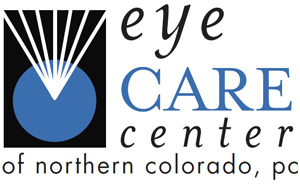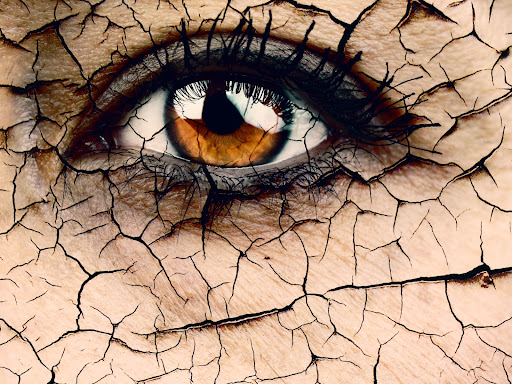As winter approaches, our dry climate gets even dryer. This doesn’t only affect our nasal passages and skin, it can also have a profound effect on our vision. If you’ve been feeling like your eyes are perpetually scratchy, stinging, or burning, make an appointment with your local eye care center to establish if you have dry eye.
In this blog, we will discuss what dry eye is, the symptoms and causes, and how it is diagnosed and treated.
What is it?
Dry Eye Syndrome occurs when your eyes don’t produce enough tears, evaporation increases, when the tear composition is imbalanced, or when the glands in our eyelids that produce the oily layer of our tears are compromised. The lack of adequate lubrication of the eye affects millions of adults in the U.S. and an increasing number of younger patients as we blink up to 35% less frequently while looking at our computer or phone screens.
A healthy eye is evident when, with every blink, lubricating (basal) tears nourish the cornea and provide a layer of liquid protection from the environment. When the glands of the eye stop producing enough lubricating oil, or the composition of the tears (tear film) changes, the health of the eye and your vision can be at risk.
What is the tear film?
Every time we blink, a fresh layer of tears, called the tear film, spreads over the eye. The tear film is important for keeping the eye moist and comfortable, and our vision clear.
The tear film is made up of three layers:
- An outer, oily layer keeps tears from evaporating too quickly and helps tears remain on the eye.
- A middle layer contains the watery portion of tears and water-soluble proteins. It nourishes the cornea and the conjunctiva (the mucous membrane that covers the entire front of the eye and the inside of the eyelids).
- An inner mucus layer binds the aqueous layer to ensure that the eye remains wet.
When there is an imbalance in the tear film or tear production, you wind up with dry eyes.
Symptoms
Symptoms of dry eye include:
- Scratchy eyes, or the feeling that something is in the eye
- Stinging or burning
- Blurred vision
- Excess tearing, sometimes with strings of mucus
- Redness and irritation
- Dryness and pain
Causes of dry eye
Factors that can contribute to dry eye include the following:
- Lifestyle causes:
- Prolonged periods of screen time resulting in insufficient blinking.
- Exposure to air conditioning, wind, smoke, and dry climates increase tear evaporation.
- Age:
Dry eye is more common in people 50 and older as there is a decline in tear production.
- Gender:
Women are more likely to develop dry eye due to hormonal changes during pregnancy and after menopause.
- Medications:
Antihistamines, decongestants, antidepressants, birth control pills, hormone replacement therapy, medications for anxiety, Parkinson’s disease, and high blood pressure have been associated with dry eye.
- Medical conditions:
- Rosacea, an inflammatory skin disease.
- Blepharitis, an inflammatory eyelid disease that can disrupt the function of the glands.
- Autoimmune disorders:
Sjögren’s syndrome, lupus, scleroderma, rheumatoid arthritis, diabetes, thyroid disorders, and Vitamin A deficiency are all associated with dry eye.
- Seasonal allergies
- Laser eye surgery:
May cause temporary or longer-term dry eye symptoms.
How do we diagnose it?
If you’re experiencing any of these symptoms, make an appointment with the ophthalmologist at your Boulder, Lafayette, Greeley, or Longmont eye care center for an eye exam to determine a cause and treatment strategy. Often the first step in the initial assessment process can be performed by one of our optometrists at our Longmont or Lafayette location.
There are several different testing procedures to diagnose and find the root cause of your dry eye. These include:
- Visibly observing your eyelids and eye surface
- Measuring the quality and quantity of your tear film.
- Watching your blink rate.
- Checking the health of the oil glands, called Meibomian glands in the upper and lower lids.
With the results, we are able to assess and treat each particular case of dry eye.
Treatments
Dry eye can be treated in many different ways depending on the reason for the ailment.
- Over-the-counter topical medications
Mild symptoms may be treated with artificial tears, gels, and ointments
- Lifestyle changes
- Cutting back on screen time and taking breaks
- Closing the eyes for a few minutes and blinking repeatedly for a few seconds
- Wraparound sunglasses to block wind
- Quitting smoking and limiting exposure to secondhand smoke
- Prescription dry eye medications, which your eye doctor can determine are advisable according to the specific causes of your condition.
- Cyclosporine eye drops
- Lifitegrast eye drops
- Corticosteroid eye drops for short term reduction of inflammation
- Autologous serum or blood serum tears
- Devices used to stimulate glands and nerves associated with tear production, like Lipiflow™
- Surgical options
- Punctal plugs to partially or completely plug the tear ducts at the inner corners of the eye to keep tears from draining from the eye
- In severe cases, in-office surgical closure of the drainage ducts
- Nutritional adjustments
- Omega 3s
- Omega 6s
- Limiting processed foods
- Increase intake of water throughout the day.
Treatment for mild cases of dry eye:
If you have a mild form of dry eye, here are a few simple environmental changes you can make:
- Avoid sitting directly in front of heating or air-conditioning vents. Move them so they are not blowing directly in your face.
- Try shielding your eyes when using a blow dryer.
- Avoid smoke as it aggravates dry eyes. If you are a smoker, you may want to seriously consider quitting.
- During the winter months, use a humidifier to add moisture to the air.
- Consider not using an overhead ceiling fan while asleep during the night.
Remember, if you are feeling any of the symptoms of dry eye, or begin to as winter approaches, contact one of our Longmont, Lafayette, Greeley, or Boulder eye doctors for an appointment. The quicker we diagnose the problem, the quicker you’ll find relief.
And be sure to check out our blog on Caring for Your Eyes in Cold Weather and Increased Eye Strain Concerns in Children from Screen Time
References and Resources
https://eyecaresite.com/dry-eye/
https://www.aao.org/eye-health/diseases/what-is-dry-eye
https://eyecaresite.com/multispecialty-eye-surgery/dry-eye-overview/dry-eye-faq/

